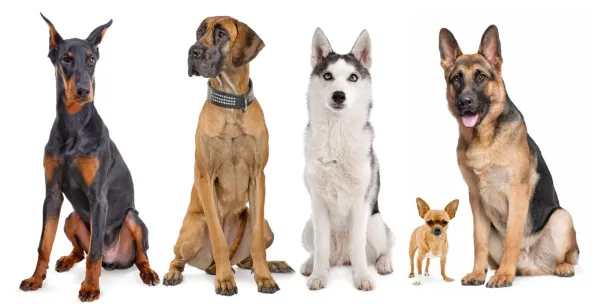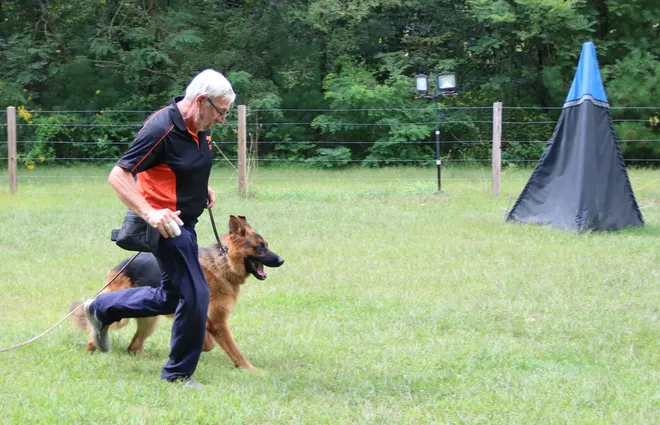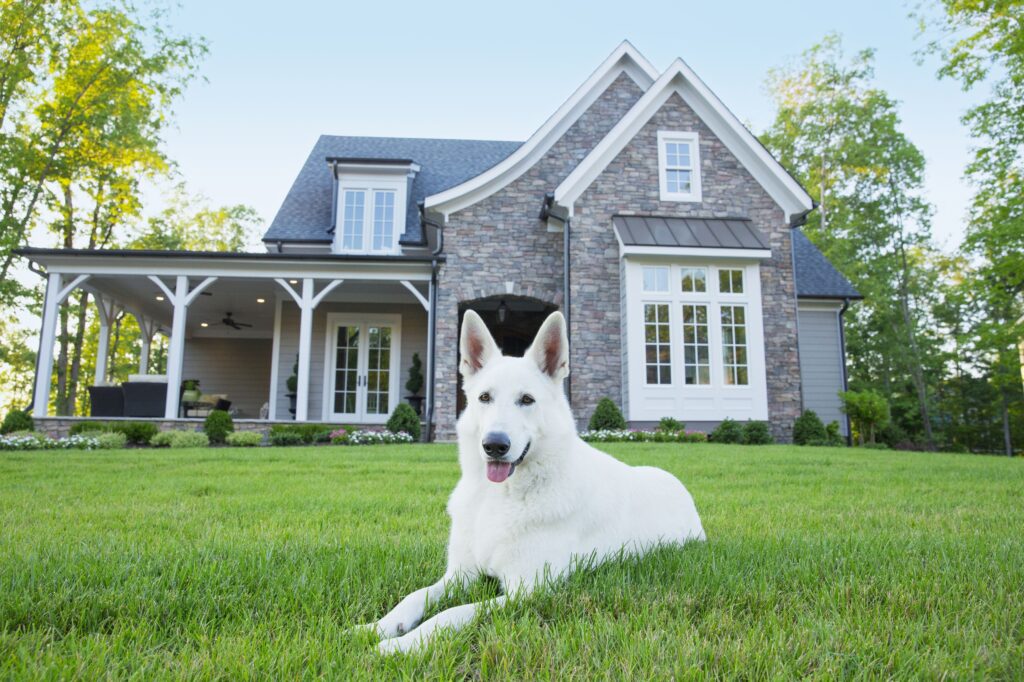Having a house guard dog can offer peace of mind, knowing that your home is protected by a loyal companion. A well-trained guard dog not only serves as a deterrent to potential intruders but also provides a sense of security for your family. However, training a dog for guarding tasks isn’t about turning them into aggressive or overly protective animals. Instead, it’s about teaching them to be vigilant, alert, and responsive to potential threats while still being a loving and trustworthy family pet. In this guide, we will explore the steps involved in training a simple house guard dog that balances both protection and companionship.
Choosing the Right Dog for Guarding
Before embarking on training, it’s crucial to start with the right dog. While almost any dog can learn basic guarding skills, certain breeds are better suited to the role due to their natural instincts and temperament. Breeds such as the German Shepherd, Rottweiler, and Doberman Pinscher have historically been favored for their intelligence, loyalty, and protective nature. However, breed alone isn’t everything. Temperament plays a vital role; a dog that is naturally calm and confident will make a better guard dog than one that is anxious or aggressive. Whether you’re training a puppy or adopting an adult dog, understanding their personality and how they respond to new situations is essential. Once you’ve selected the right dog, you can move on to laying the foundation with basic training.

Basic Obedience Training as a Foundation
The foundation of any successful guard dog training lies in basic obedience. Teaching your dog commands such as “sit,” “stay,” “come,” and “down” is essential for establishing control and discipline. Obedience training ensures that your dog listens to you in any situation, which is particularly important for a guard dog that needs to be responsive under pressure. Patience and consistency are key when training obedience. Dogs respond best to positive reinforcement, so rewarding them with praise or treats when they follow commands will encourage them to repeat the behavior. Establishing yourself as the leader in the relationship helps to create a bond of trust, which will be vital when more advanced guard dog training begins. Once your dog has mastered these basics, you can start working on more specialized guarding behaviors.
Socialization for a Well-Rounded Guard Dog
A well-trained guard dog doesn’t just protect—it knows how to differentiate between friend and foe. Socialization is an important step in this process, as it helps your dog become comfortable in various situations and around different people. Exposing your dog to a variety of environments, such as parks, city streets, and visits from family or friends, teaches them to remain calm and collected in different settings. When introducing your dog to strangers, it’s essential to ensure they remain alert but not aggressive. The goal is to balance protection with friendliness; a guard dog should not be hostile toward everyone who enters the home. By ensuring your dog is well-socialized, you’ll help them develop the ability to distinguish between familiar faces and potential threats, a crucial skill for any house guard dog.
Boundary and Territory Training
Once your dog has learned basic obedience and socialization, the next step is teaching them to guard specific areas. This form of territorial training helps your dog understand which spaces are theirs to protect. For example, you can define boundaries like your yard, house, or driveway, teaching your dog to remain vigilant in these areas. Start by walking your dog around the perimeter of your property and rewarding them when they remain attentive. Gradually, your dog will begin to associate these areas with their guarding responsibilities. Additionally, introducing the concept of guarding on command, such as instructing your dog to “watch” or “stay alert,” reinforces this behavior in a controlled way. Over time, your dog will learn to recognize and guard their designated territory without unnecessary aggression.

Barking on Command and Bark Control
One of the most effective ways for a guard dog to alert you of potential danger is through barking. Training your dog to bark on command using cues like “speak” can be incredibly useful. Start by encouraging your dog to bark when someone approaches the house, and reward them when they do so. However, it’s equally important to teach your dog to stop barking when instructed. A command like “quiet” helps prevent excessive barking, ensuring your dog doesn’t become a nuisance to you or your neighbors. The ability to assess whether a situation is a real threat or a harmless event, such as the mailman arriving, is a skill that comes with practice. By balancing barking with proper control, your dog will become more focused and effective as a guard dog.
Defensive Training Techniques
Training your dog to alert you without becoming aggressive is crucial in developing a reliable guard dog. The goal is to have a dog that can assess a situation and act defensively if needed, without unnecessary violence. Defensive training begins with teaching your dog to alert you when they perceive a threat, but also to remain calm until you instruct them further. Bite inhibition is a vital part of this training, as it teaches your dog to use their mouth only when absolutely necessary. You can simulate real-life guarding scenarios, such as having a stranger approach the house and teaching your dog to bark without attacking. These controlled situations help your dog understand when and how to react, ensuring they remain protective but safe.
Commanding and Reinforcing Guard Behavior
Once your dog has learned the basics of guarding, regular reinforcement is essential to keep their skills sharp. Guarding behaviors, like any learned behavior, can fade if not practiced consistently. By using clear and firm commands, you can prompt your dog to engage in guarding tasks. Commands such as “watch” or “guard” help your dog understand when to be on alert. Positive reinforcement is key here, but instead of relying solely on treats, use verbal praise and physical affection to reward your dog’s good behavior. This ensures that your dog remains responsive to commands and continues to view guarding as a rewarding and necessary task.
Balancing Guarding and Companionship
While it’s important for your dog to be protective, they should also remain a loving and approachable companion. A guard dog doesn’t need to be aggressive all the time—in fact, the best house guard dogs are those that can switch between guarding and relaxing with their family. To maintain this balance, ensure that playtime and relaxation are incorporated into your dog’s daily routine. Regular exercise, mental stimulation, and social interaction are vital for your dog’s well-being. Keeping your dog mentally and physically engaged outside of guarding tasks helps prevent stress and frustration. The result is a dog that can effectively protect your home but also be a loyal and affectionate member of the family.
Training a house guard dog takes time, patience, and consistency, but the benefits are well worth the effort. A well-trained guard dog provides both protection and companionship, offering a sense of security for your home while still being a loving part of the family. By selecting the right dog, establishing a foundation of obedience, and reinforcing guarding behaviors through regular practice, you’ll create a dog that is alert, responsive, and capable of distinguishing between real threats and everyday occurrences. With the right training, your house guard dog will become a reliable protector, giving you peace of mind and a loyal friend for life.

After 5 years in a high pace business management role, I partnered with an e-commerce developer to start building Dog Supplies Warehouse.
Our number one goal is to make sure all products are managed and delivered to our customers door fast and accurately.

